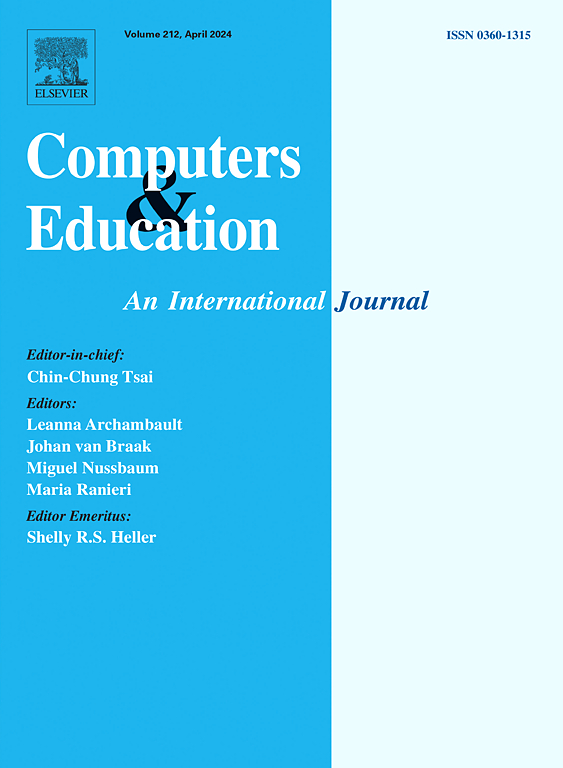High heels, compass, spider-man, or drug? Metaphor analysis of generative artificial intelligence in academic writing
IF 10.5
1区 教育学
Q1 COMPUTER SCIENCE, INTERDISCIPLINARY APPLICATIONS
引用次数: 0
Abstract
This research employed metaphor analysis to explore 277 postgraduate students' perceptions of the role of generative artificial intelligence (GenAI) in academic writing. All participants were international students, from a total of 14 countries and regions, studying in the United Kingdom. Data collection was carried out in two phases. The first was a survey comprising demographic and metaphor-related questions, and the second involved metaphor checking, in which participants provided screenshots of their interactions with GenAI. The data, which were analyzed both qualitatively and quantitatively, yielded 53 unique metaphors for the concept of GenAI in academic writing. We divided these into four conceptual categories in what we term the 4T Pyramid Model: Technical Support (representative metaphor: high-heeled shoes), Text Development (compass), Transformative Potential (Spider-Man), and Threat (drug). The respondents' academic disciplines influenced their perceptions of GenAI, but overall, the results suggest that most viewed it as transformative, i.e., more than just a writing tool. This study's innovative methodology integrating metaphor analysis with real user interactions offers a framework, aligned with Bloom's Taxonomy, that reveals the multi-level benefits and potential risks of GenAI. It also provides actionable insights for AI literacy education, including strategies for effective prompt design.
高跟鞋,指南针,蜘蛛侠,还是毒品?生成式人工智能在学术写作中的隐喻分析
本研究采用隐喻分析法探讨了277名研究生对生成式人工智能(GenAI)在学术写作中的作用的认知。所有参与者都是在英国学习的国际学生,来自14个国家和地区。数据收集分两个阶段进行。第一个是包含人口统计和隐喻相关问题的调查,第二个涉及隐喻检查,参与者提供他们与GenAI互动的截图。对这些数据进行定性和定量分析后,得出了53个关于学术写作中GenAI概念的独特隐喻。我们将这些分为四个概念类别,我们称之为4T金字塔模型:技术支持(代表性比喻:高跟鞋),文本开发(指南针),变革潜力(蜘蛛侠)和威胁(药物)。受访者的学术学科影响了他们对GenAI的看法,但总体而言,结果表明大多数人认为它具有变革性,即不仅仅是一个写作工具。本研究的创新方法将隐喻分析与真实用户交互相结合,提供了一个与Bloom分类法一致的框架,揭示了GenAI的多层次好处和潜在风险。它还为人工智能素养教育提供了可操作的见解,包括有效提示设计的策略。
本文章由计算机程序翻译,如有差异,请以英文原文为准。
求助全文
约1分钟内获得全文
求助全文
来源期刊

Computers & Education
工程技术-计算机:跨学科应用
CiteScore
27.10
自引率
5.80%
发文量
204
审稿时长
42 days
期刊介绍:
Computers & Education seeks to advance understanding of how digital technology can improve education by publishing high-quality research that expands both theory and practice. The journal welcomes research papers exploring the pedagogical applications of digital technology, with a focus broad enough to appeal to the wider education community.
 求助内容:
求助内容: 应助结果提醒方式:
应助结果提醒方式:


